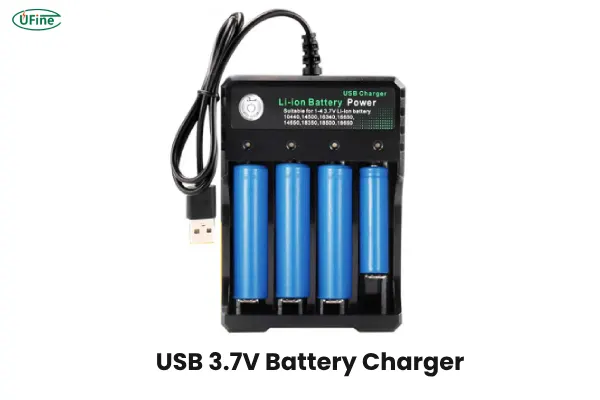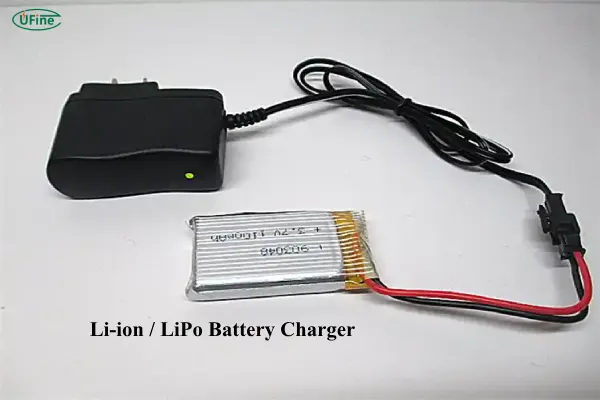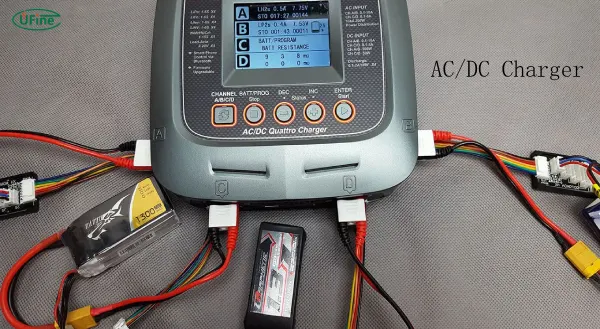When you have a 3.7V battery, choosing the right charger is essential to ensure safe and efficient charging. Understanding the compatibility of your charger with your battery is crucial for maintaining battery health, ensuring long lifespan, and preventing damage. In this article, we’ll explore the key aspects of 3.7V battery chargers, their types, how to choose the right one, and potential issues related to incompatibility.
Part 1. Basic principles and components of a 3.7V battery charger
The basic function of a 3.7V battery charger is to provide the right amount of voltage and current required to charge your lithium-ion or lithium polymer (LiPo) battery. These chargers typically consist of:
- Voltage Regulator: Ensures the charger provides the correct voltage (typically 4.2V for charging a 3.7V battery).
- Current Limiting: Prevents overcharging by regulating the current to a safe level, often in the range of 500mA to 1A, depending on the battery’s specifications.
- Charging Indicator: A light or digital display to indicate charging status, such as charging, fully charged, or error.
- Protection Circuit: Some chargers include built-in protections such as overcharge protection, short circuit protection, and overcurrent protection.
Part 2. Various types of 3.7V battery chargers
Different 3.7V chargers are designed for specific battery types, applications, and convenience. Below are the main types:
- USB 3.7V Battery Charger: This is one of the most common and convenient chargers, typically used for 18650 lithium-ion batteries. It can be plugged into a USB port or a power bank to charge the battery. These chargers usually have LED indicators to show charging progress.
- Dedicated Li-ion / LiPo Battery Charger: These chargers are designed specifically for charging Li-ion or LiPo cells and often offer features like multiple charging channels, balanced charging, and advanced safety protections.
- AC/DC 3.7V Battery Charger: These chargers are more robust, designed for higher-capacity batteries or specialized applications, offering fast charging and a wall plug for AC power input.
Part 3. Buying a charger: key parameters to consider
When selecting a 3.7V battery charger, it’s essential to look at a few key parameters to ensure compatibility and safe charging:
- Output Voltage: Make sure the charger has an output of 4.2V for charging a 3.7V battery (nominal voltage). Charging a 3.7V lithium battery to a higher voltage (like 4.5V or 5V) could damage the battery or reduce its lifespan.
- Charging Current: The current should be compatible with the battery’s capacity. A typical 3.7V Li-ion battery can be charged at 0.5C to 1C (e.g., for a 2000mAh battery, the current could range from 1000mA to 2000mA).
- Charger Safety Features: Look for features such as overcharge protection, temperature monitoring, and reverse polarity protection. These features are important for battery safety and for preventing issues like overheating or battery fires.
- Connector Type: Some chargers use Micro USB, while others use DC barrel plugs. Ensure the connector matches your battery’s design and your charging setup.
Part 4. How to identify if a charger and battery are compatible
To ensure compatibility between the charger and your 3.7V battery, check the following:
- Voltage Rating: The output voltage of the charger should be 4.2V to match the full charge voltage of a 3.7V battery.
- Current Rating: The current provided by the charger should match or be lower than the maximum charge rate specified by the battery manufacturer.
- Battery Chemistry: Ensure your battery is either Li-ion or LiPo, as these are the typical chemistries for 3.7V batteries. Chargers are designed for specific chemistries, so using a charger meant for NiMH or Lead Acid batteries can be dangerous.
Part 5. What happens if charger and battery are incompatible?
Using an incompatible charger can result in several potential issues:
- Overcharging: If the charger provides too high a voltage, it could overcharge the battery, potentially leading to battery degradation, swelling, or even thermal runaway (which can cause fires).
- Undercharging: If the charger’s voltage or current is too low, the battery may not be fully charged, leading to reduced capacity and shorter runtime.
- Shortening Battery Lifespan: Over or undercharging frequently can damage the battery, reducing its cycle life (the number of charge and discharge cycles the battery can go through before its capacity drops significantly).
- Heat Build-up: Incompatible chargers can cause excessive heat during charging, which may lead to battery overheating, reduced performance, or leakage.
Part 6. What batteries can the 3.7V charger charge?
A 3.7V charger is generally designed for Li-ion or LiPo batteries with a nominal voltage of 3.7V, including:
- 18650 Batteries: Commonly used in flashlights, power banks, and laptops.
- LiPo Batteries: Found in various devices like drones, RC cars, and portable electronics.
- Other Lithium-Based Batteries: Batteries in smartphones, cameras, and tablets.
Make sure the charger is rated for your battery’s capacity and type to ensure efficient and safe charging.
Part 7. What chargers can replace a 3.7V battery charger?
While it’s always best to use a charger specifically designed for your battery, in some cases, other chargers may serve as replacements:
- Universal Lithium-Ion Chargers: These chargers can charge different Li-ion or LiPo batteries and typically offer multiple charging ports.
- Multi-Battery Charger: Some chargers can handle various voltages and battery types, so long as the output voltage and current are compatible.
Part 8. What’s the difference between 3.7V and 4.2V chargers?
A 3.7V battery typically has a nominal voltage of 3.7V and a fully charged voltage of 4.2V. Therefore, a 3.7V battery charger will charge the battery to 4.2V. A 4.2V charger can only be used with batteries that have a similar voltage rating (usually Li-ion and LiPo batteries).
Key Difference:
- 3.7V charger: Can safely charge a 3.7V nominal battery to 4.2V.
- 4.2V charger: May charge other batteries beyond 4.2V and is often used in specific applications.
Part 9. 3.7 V battery charger USB
A 3.7V USB charger is often the most convenient option for charging small Li-ion or LiPo batteries. It uses a USB port (e.g., Micro USB or USB-C) to charge the battery, making it suitable for portable electronics such as smartphones, power banks, and small tools.
Part 10. 3.7 V LiPo battery charger
When charging LiPo batteries with a nominal voltage of 3.7V, using a dedicated 3.7V LiPo battery charger is essential. These chargers provide precise voltage control to ensure safe charging, as LiPo batteries are more sensitive than standard Li-ion cells.
Part 11. Can you use a 3.7 V battery charger for other batteries?
It is not recommended to use a 3.7V charger for batteries with different voltage ratings, such as 3.2V LiFePO4 or 4.4V Li-ion batteries. Always ensure the charger matches the specific voltage and chemistry of your battery for safe charging.
Related Tags:
More Articles

The Best Applications for 36V 100Ah Lithium Batteries: From Electric Bikes to Marine Vehicles
The 36V 100Ah lithium battery powers vehicles and devices with its lightweight, efficient, and long-lasting design for various applications.
Potassium Ion Batteries vs. Lithium-Ion Batteries: Which Is Better for Your Applications?
Potassium-ion batteries are emerging as a cheaper, safer, and more sustainable alternative to lithium-ion batteries. How do they compare? Let’s find out.
How to Buy the Cheapest LiFePO4 Battery?
Looking for the cheapest LiFePO4 battery? Learn how to find the best deals and save money today. Start your smart buying journey now!
LiFePO4 Battery 12V vs. 24V vs. 48V: Which is Better?
Comparing 12V, 24V, and 48V LiFePO4 batteries? Discover which is best for your needs. Get informed and make the right choice today!
How Long Will LiFePO4 Battery Life Last?
Want to know the lifespan of LiFePO4 batteries? Explore key factors affecting their durability and maximize your investment. Find out more now.






